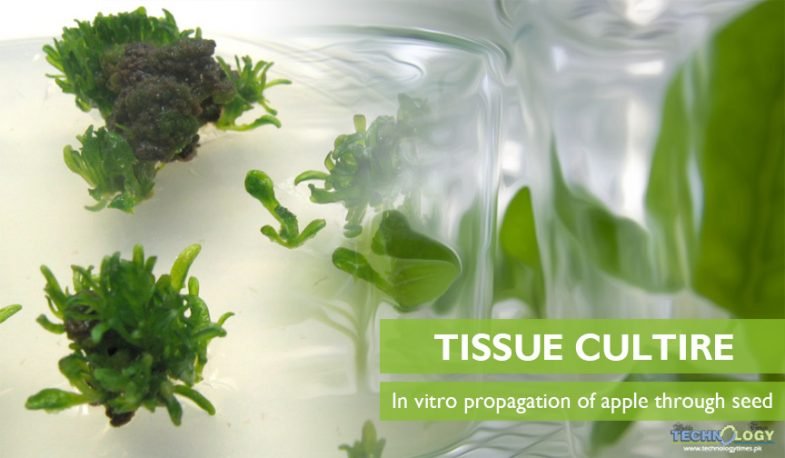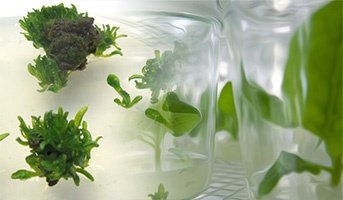Tissue culture is emerging field of breeding and forms integral part of biotechnology. It offers an alternate to conventional vegetative propagation and has various advantages over other breeding methods like we get pathogens free plant in tissue culture and through this technique we can propagate plants which otherwise impossible to propagate and it require only small part of plant for its propagation.
By M. Shahzad and Sumaira Bibi

Tissue culture technique is very popular now a day especially in fruits like pear, peaches, apple etc. Apple is highly consumed fruit which is full of nutrients and an average size apple contains nutrients equal to a bowl of oatmeal or any other cereal.
Apple can be propagated through any vegetative part but in off season when young branches are not avaialable we prefer seed for tissue culturing and seed can not grow directly on tissue culture media so we used b0rth media(bridge of filter paper) for its growth in laboratory.
Rootstocks are also important constituent of apple propagation as they hasten the establishment of scion and facilitate the early production of fruits they also known to impart characteristic to scion such as resistance to disease and other abiotics stresses. High cost is the major factor limiting the use of tissue culture application on apple. Recently commercial labs have significantly improved their techniques and reduced the cost of propagation by using seeds of apple instead of rootstock.
This is very delicate process as on one hand we want to avoid any contamination and on the other hand we are trying to grow apple through seed which is itself a difficult process as we have to use borth media first and then later on we use M S media.
First, we select healthy average size apple for seeds and then we placed seeds in borth media for 2 weeks and when shoot tips and leaves appear we transfer it to general M S tissue culture media having vitamins and sucrose.
Main precaution we take in tissue culture technique is to avoid any contamination and in case of any contamination at any step of experiment, our whole experiment becomes risky and in case of severe contamination we have to repeat the whole process. we can control or alleviate this contamination by proper handling during experiment.
Tissue culture propagation through seed is preferred to vegetative part to minimize contamination because external vegetative part is more prone to contaminate than seeds.
First, we select a healthy average size fruit for seed harvesting, there should be no sign of external damage or contamination. seed is sterilized for half an hour by sterilizing agent (max, twin20) then we treat seeds with 30% ethanol and 70% double distilled water for 10 minutes in laminar flow then wash it twice with double distilled water.
The coat of seed is removed to break dormancy and grow seeds in Borth media after one week of culture. seedlings appear after 5 weeks we transfer plant with young leaves from borth media to M S media. For further propagation, this plant can be cut into pieces and then one piece is grown in each tube.
Different combinations of BAP, IAA and GA3 will be used to optimize media. The maximum number of shoots and shoots length will be recorded after 5 weeks of culture on multiplication media. The success rate of shoot multiplication depends not only on the genotype but also on plant growth regultor and interactions between these two factors.
The inoculated culture will be grown at different light and dark conditions. The light intensity, a photoperiode of 16 hours light and 8 hours dark will be between 2000-3000lux. The culture will be maintained at 250c room temperature.
Healthy shoot tips will be excise from established culture and transferred to different conservants media and their phenotypic data will be recorded.
Sprouting apple seed and caring the young seedlings simple to do and within one year you can plant the sapling in your garden, apple trees will only thrive and bear fruit if planted outdoor
References:-
- Chang, Y. 2013. tissue culture propagation of apple rootstock. extension.
- Mehta, M, Raja Ram and A Bhatacharya. 2014.a simple and cost effective liquid culture system for the micropropagation of two commercially important apple rootstocks. indian journal of experimental biology.748-754.
